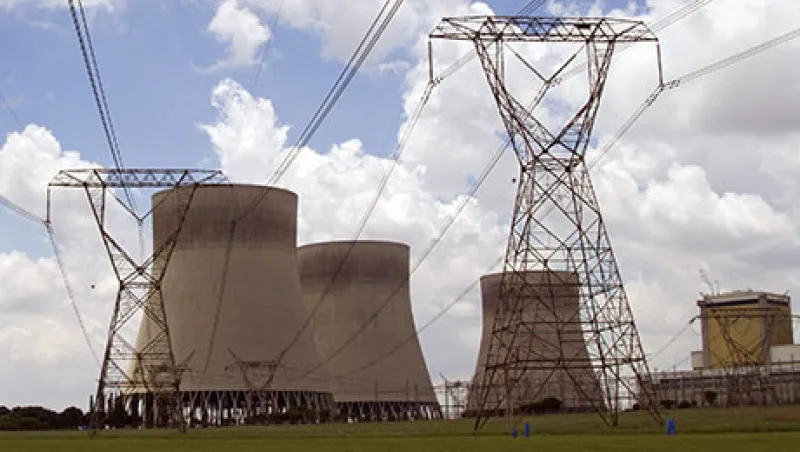Africa has more than 1 billion people. Yet less than one third of the continent’s population in sub-Saharan Africa has access to electricity. Through a network of public-private partnerships, the Power Africa initiative, announced in June 2013 by President Barack Obama, aims to double that number — and for a relatively low price.
Power Africa is not the typical foreign aid initiative, not only because the U.S. government aims to spend relatively little but also because it’s designed so that private sector investors lead the way. The program has set aside $7 billion: a minuscule amount in comparison with the estimated $300 billion the International Energy Agency thinks is needed. Given the recent success of democracy in some of the continent and China’s growing influence, it’s becoming prime time to invest in energy. Instead of building new power plants itself, the program wants to find private investors currently considering investing on a for-profit basis and, through various public sector financial incentives and political connections, persuade them to participate. This strategy operates on the premise that public money won’t be enough to make a dent on its own, and fits with a development aid trend of partnering with the private sector through private-public partnerships, joint ventures and other channels.
“The government is bullish on private sector partners,” says Ben Leo, senior fellow at the Center for Global Development, a Washington think tank. “Where the private sector is an active player, this makes a lot of sense.”
For investors considering Africa’s electricity sector, Power Africa has enlisted 12 federal agencies to offer low-cost financing, technical assistance, export credits and access to relationships with foreign governments to lobby for improved laws and regulations. The overall goal is to add 30,000 megawatts of new electricity-generating capacity in six countries during initial phase, although a deadline for that has not yet been set. As of late March, the program had on its books fully financed projects that will create roughly 4,100 new megawatts, says Aditya Raval, a spokesman for the U.S. Agency for International Development (USAID), which is coordinating the multiagency effort. Under consideration are projects intended to get an additional 15,000 megawatts online.
Beyond teaming up with investors, Power Africa also addresses issues that new power plants alone can’t solve. This means pushing for tighter rules and more reliable utilities, investing in transmission grids and creating document templates to help deals close faster and more cheaply. Power Africa has also hired independent transaction advisers and embedded them in local ministries to smooth negotiations. The overall approach has won approval and funding from outsiders: The World Bank has contributed $5 billion to the effort, Sweden $1 billion and the African Development Bank $3 billion. Power Africa, which is open to investors of any country, also backs rural and renewable African ventures through its Off-Grid Energy Challenge, a series of $100,000 grants from the U.S. African Development Foundation to local entrepreneurs. So far, 28 of these grants have been distributed.
The African electricity sector suffers from common problems such as regulated tariffs that are too low to justify new investment, loss-prone transmission lines and debt-laden utilities unable to collect from customers, pay suppliers or function without support from the government. “When you look at doing a deal with most African utilities, you’re looking at sovereign risk,” says Paul Hinks, CEO of Washington-headquartered Symbion Power, which has built power projects in Africa, Iraq and Afghanistan, and serves as the chairman of the Corporate Council on Africa, a U.S.-Africa trade organization. If a project needs low-cost financing or political risk insurance, the U.S. Overseas Private Investment Corp. (OPIC) can step in. And the Export-Import Bank of the U.S. can offer export credits. “It comes down to asking the business community what they need to get their deals to move forward,” says Andrew Herscowitz, program coordinator for the Power Africa and Trade Africa initiatives of the U.S. government.
In Ghana U.S. foreign aid agency Millennium Challenge Corp. has pledged to spend as much as $498 million helping several of the country’s electricity bureaucracies reform their practices and fix their balance sheets. Another resource is the African Legal Support Facility, which is managed by the African Development Bank and is available to provide legal advice on transactions. Ethiopia used the group to negotiate a power purchase agreement for a 1,000-megawatt geothermal plant. One of the first producing plants via Power Africa is an 8.5-megawatt solar plant in Rwanda, financed in part by OPIC. Renewables are not just a green investment; they also require less energy infrastructure. “Renewables can be placed in remote areas, so you don’t have to build out the grid to get there,” says Herscowitz.
Over the long term, Power Africa’s future is unclear. Bills pending in Congress could allocate funding elsewhere, once Obama completes his term in office. In the meantime, backers hope investors will consider the returns of investing in frontier markets. “They’re going to have to take some risks,” says Herscowitz, “but we’re hoping Power Africa can help reduce them.”
Get more on emerging markets .






